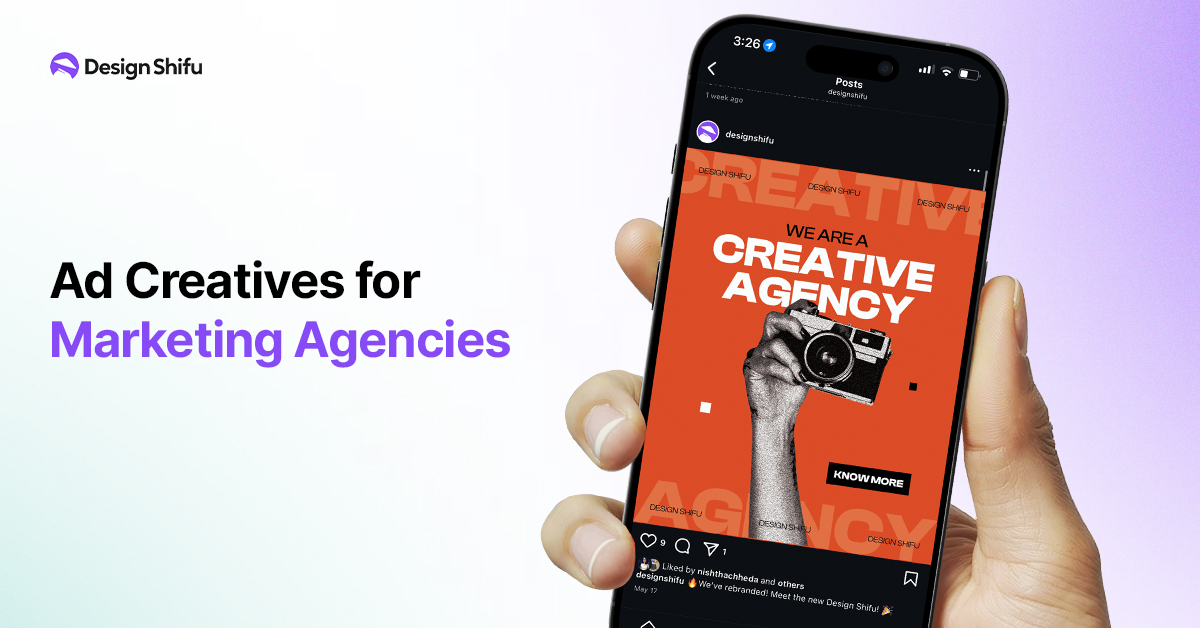With the current digital era, mobile marketing is a vital business tool for companies of all sizes, particularly for small businesses that want to reach their audience efficiently and effectively. Mobile Marketing for Small Businesses discusses how small businesses can harness the potential of mobile marketing to promote their visibility, interact with customers, and boost sales.
Given the increasing dependency on mobile phones, having a mobile-first approach is essential for small businesses to be competitive. Throughout this blog, you will have access to down-to-earth mobile marketing tactics, tools, and best practices to enable your small business to not only survive but also establish useful connections with clients while on-the-go.
Success in mobile marketing requires understanding the customer journey, experimenting with various tactics, and using insights to refine strategies. By staying agile and focused on user needs, marketers can harness the power of mobile marketing to connect with audiences effectively and drive business outcomes.
What is Mobile Marketing?
Originally, mobile marketing consisted of SMS and MMS, but today it offers a variety of ways to reach users directly through their mobile phones. Smartphones, tablets, and smartwatches have been gaining increased capabilities in recent years, resulting in rapid advances in mobile technology.
The scope of mobile marketing today includes email, mobile-optimized websites, voice calls, mobile apps with or without push notifications, social media, QR codes, and chat apps, among others. As mobile devices become more integral to daily life, mobile marketing offers an invaluable channel for brands to reach consumers effectively, demanding continuous innovation and adaptation to leverage the full potential of mobile engagement.
User-friendliness is crucial to the success of mobile marketing. The design of mobile platforms plays a key role in this context, as it directly impacts the user experience. A well-designed, mobile-friendly interface is not only more accessible and navigable but also significantly more engaging and satisfying for users.
“Are you looking for an expert who can help you build a similar design? Look no further!”
Get the most out of your mobile presence with Design Shifu’s expert design services! Ensure your website not only lands properly on mobile devices but also offers an engaging and seamless user experience.
With Design Shifu, you gain access to unlimited graphic design requests, rapid turnaround times, and dedicated professional designers—all at a flat monthly rate. Take the first step towards enhancing your mobile interface. Sign up now and leverage our 14-day risk-free money-back guarantee to see the difference professional design makes.
The Importance of Mobile Marketing
Unmatched Reach and Accessibility
Mobile marketing stands out as a pivotal digital marketing strategy, primarily due to the extensive reach and accessibility of mobile devices. One of the surveys reveals that over 90% of participants own a mobile phone, with more than 80% having smartphones. This high penetration rate showcases the incredible reach mobile devices have, making them an invaluable platform for businesses to connect with a broad audience.
Enhanced Engagement Opportunities
With smartphones, consumers can engage with them in a variety of ways, from apps and social media to emails and the internet. As a result of constant connectivity, businesses can engage with consumers in a highly personalized and timely manner, but it also emphasizes the importance of respecting consumers’ privacy.
Consumer Dependence on Mobile Devices
The purpose of mobile marketing is not just to reach the right consumer, but to do so at the right time and place, using the ubiquitous nature of mobile phones to maximize impact.
Cost-Effectiveness of Mobile Marketing
A major advantage of mobile marketing is its cost-effectiveness compared to traditional marketing channels such as radio and television. In addition to increasing engagement, sending targeted messages directly to consumers’ smartphones offers significant savings compared to more expensive advertising methods. With SMS campaigns, businesses can reach customers directly and affordably and make the most of their marketing budgets while achieving significant reach and engagement.
Types of Mobile Marketing
By choosing the right mix of these strategies based on your business objectives and target audience preferences, you can create a comprehensive mobile marketing plan that engages users across multiple touchpoints.
Mobile Search Ads
These are advertisements that pop up on smartphone and tablet screens, whether through search results or on mobile-friendly websites. Services like Google Ads offer versatile options for these ads, allowing you to tailor them to fit your campaign’s needs, including format choices like text, video, or interactive click-to-call features.
Boost your mobile campaign’s impact with Design Shifu’s custom-designed ads. From eye-catching visuals to interactive click-to-call features, our dedicated professional designers work round-the-clock to deliver high-quality, mobile-optimized ads.
Start with us today and take advantage of unlimited design requests and revisions to ensure your mobile ads stand out. Don’t miss out on capturing your audience’s attention on their most used devices. Click here to explore our flexible plans and begin transforming your mobile marketing strategy with Design Shifu’s creative solutions!
SMS Marketing
Utilizing text messages to communicate offers or news to your customers remains a highly effective method due to its directness and wide reach. It’s an affordable option that requires gathering a consent-based database of contacts for compliance and effectiveness.
App-Based Marketing
Ads that appear within mobile applications, such as banner or video ads, cater specifically to app users. This strategy is particularly prevalent in gaming apps and can significantly boost visibility and engagement.
Location-Based Marketing
This innovative approach sends promotions to users based on their geographic location, offering timely and relevant deals as they near your business. It necessitates user consent for location sharing, making it a more personalized marketing tactic.
QR Code Marketing
A new strategy which engages customers by prompting them to scan QR codes with their smartphones, leading them to your website or a special offer. This method encourages active participation and enhances user interaction with your brand.
What Are the Mobile Marketing Tools?
Here’s a breakdown of essential tools that align with different facets of mobile marketing, tailored to ensure your strategy is both dynamic and impactful.
Google Analytics
A foundational tool for understanding customer behavior, device usage, and website interaction, critical for tailoring your mobile marketing efforts.
Google Optimize
Ideal for A/B testing, helping refine the mobile user experience on your website to meet your audience’s needs better.
Google Ads
This platform, evolving from AdWords, simplifies setting up and managing online ad campaigns across Google’s ecosystem, including search results, YouTube, and Maps, offering a broad reach to mobile users.
Mixpanel
Offers advanced analytics for detailed insights into how users interact with your website and app, enabling targeted engagement strategies.
Localytics
Provides in-depth analytics and marketing tools specifically for mobile apps, helping understand user behavior and enhance app performance.
AdMob by Google
Helps monetize your app through in-app advertising, offering tools for ad setup and insights to grow your app business.
BulkSMS
Facilitates direct communication with your audience via SMS, supporting personalized and scheduled text messages globally.
Adobe Spark
A suite of tools for creating visually appealing graphics, web stories, and videos, suitable for businesses looking to produce quality content on a budget.
Buffer
Assists in scheduling social media posts across various platforms, making content management more efficient and consistent.
How To Develop a Mobile App Marketing Strategy?

Each component plays a part in creating a cohesive and comprehensive approach to digital marketing, ensuring you meet your customers where they are, in ways that resonate with them the most.
Build a Mobile-Friendly Website
In today’s digital landscape, a mobile-friendly website is a necessity. It is the basis for your mobile marketing strategy. You must design your site so it adapts smoothly to a variety of screen sizes and devices, making it responsive. As well as enhancing your site’s user experience, optimizing for mobile will improve your site’s search engine ranking, increasing your customers’ chances of finding you online.
Use Mobile Apps for Marketing
Your customer base can be reached directly by leveraging mobile apps. By utilizing features like push notifications, you can keep your users informed about new products, offers, and updates, encouraging repeat visits and fostering loyalty.
Apps can provide a more customized and engaging experience than traditional web browsing. To build a successful app, it must deliver value to your customers, whether it’s with exclusive content, services, or offers.
Explore Mobile Advertisements
Mobile advertisements are a versatile tool for reaching out to potential customers on the devices they use the most. This can range from search ads that appear when users query a related term, to display ads in apps and on websites. Tailoring these ads to the mobile experience, with concise messaging and clear calls-to-action, can drive higher engagement and conversions.
Engage With Personalized Campaigns
Personalization is the key to cutting through the noise in today’s crowded digital space. Use data analytics to understand your audience’s preferences and behaviors, then craft campaigns that speak directly to them.
This could mean personalized email marketing, SMS messages that address the recipient by name, or app notifications based on previous interactions. Such personalized approaches significantly increase the chances of engagement and conversion.
Implement Voice Search Optimization
With the rise of digital assistants like Siri, Alexa, and Google Assistant, optimizing for voice search is becoming increasingly important. This involves understanding the more conversational tone of voice queries and integrating those natural language phrases into your content.
By doing so, you increase your visibility in voice search results, making it easier for users to find your business through these emerging channels.
T- Mobile Marketing Strategy
T-Mobile’s approach to attracting customers from competitors and enhancing conversion rates involved a strategic four-step process, leveraging advanced analytics and personalized marketing tactics. Here’s an overview:
Step 1: Pinpoint Potential Customers
T-Mobile’s team was able to analyze the nuances of customer behavior, including the devices they use and their preferences, using sophisticated tools like Adobe Analytics. With this technology, T-Mobile was able to identify visitors to its website who were using rival carrier-serviced devices, allowing them to market to them more effectively.
Step 2: Customize Offers for Identified Segments
T-Mobile’s marketing teams were seamlessly able to access this valuable information through Adobe Marketing Cloud after identifying potential customers from competitor networks. Through Adobe Experience Manager (AEM), customized web experiences could be created, which not only met the demand for mobile-friendly content but also significantly improved site performance.
Step 3: Offer Testing
Following that, T-Mobile meticulously tested a number of competitive carrier-specific promotional offers. They could measure the effectiveness of different strategies in real-time by crafting targeted messages that highlighted the benefits of switching to T-Mobile, including financial incentives like covering early termination fees.
Step 4: Master Personalization
The final step in T-Mobile’s strategy was to fine-tune the personalization of their marketing messages. By comparing the impact of generic messages against those tailored to users based on their current carrier, T-Mobile discovered that personalized communication significantly boosted engagement, as evidenced by a substantial increase in cart start rates.
How To Overcome Challenges In Mobile Marketing?
By addressing these challenges head-on with practical, user-focused strategies, you can create more effective, engaging, and successful mobile marketing campaigns that resonate with your audience.
1. Understand Your Audience
Mobile usage is unique to each segment of your audience. Create detailed buyer personas to help tailor your mobile marketing strategies to match specific needs and preferences of each segment of your audience. Use surveys, social media interactions, and analytics to gather insights.
2. Create Mobile-Friendly Content
On a mobile screen, content that looks great on a desktop might not translate well. Focus on responsive design for your website and emails, ensuring they adjust seamlessly to any screen size. Use images and videos wisely, ensuring they load quickly on mobile devices.
3. Stay Ahead of Technology
It is no secret that mobile technology is evolving rapidly, with new trends and tools emerging all the time. Follow industry blogs, attend webinars, and participate in relevant online forums to stay up to date on the latest mobile marketing trends and technologies. You should try out new platforms and technologies on a small scale to see what works best.
4. Navigate Privacy Regulations
GDPR and CCPA regulate the handling of personal data, and consumers are increasingly concerned about privacy. When it comes to mobile marketing, make sure you obtain explicit consent from users before sending communications. Review and update your privacy policies regularly to meet current standards. Ensure that your mobile marketing practices comply with all applicable privacy laws.
5. Measure Success
With so many metrics available, it can be difficult to determine which ones accurately reflect the success of your mobile marketing efforts. Make sure your KPIs align with your marketing objectives. Select metrics that provide meaningful insight into your campaign’s performance, such as engagement rates, conversion rates, or customer retention, and use this data to improve your campaigns.
How Can Mobile Marketing Strategies Boost Your Sales?
Mobile marketing strategies can significantly boost your sales by meeting your customers where they spend a lot of their time: on their mobile devices. Here’s a straightforward look at how these strategies can lead to increased sales:
1. Personalized Engagement
Customers are more likely to buy from you if you use data from mobile interactions to send personalized offers and product recommendations to their smartphones.
2. Convenient Shopping Experiences
In the age of mobile marketing, customers are able to shop from anywhere, at any time, with just a few taps on their phones. This ease of use can lead to more impulse purchases and repeat sales.
3. Timely Promotions
SMS or push notifications can be used to capture customers’ attention at the right time. For example, a discount code sent during lunch hours or a weekend sale alert can spur action.
4. Increased Visibility
You can boost sales by optimizing mobile content, including your website and emails, so that they appear clearly and attractively on all devices.
5. Customer Loyalty Programs
It is easy to manage and participate in loyalty programs with mobile apps. Customers can collect points, redeem rewards, and receive exclusive offers, all of which encourage repeat purchases and engagement.
Frequently Asked Questions
SMS promotions offering discounts to subscribers and in-app advertisements targeting users based on their app usage and preferences.
Mobile marketing analysis involves evaluating data from mobile campaigns to understand user behavior, campaign effectiveness, and areas for optimization.
A mobile-led marketing strategy prioritizes mobile channels and devices in planning and executing marketing activities, recognizing mobile as the primary means of reaching and engaging with audiences.
Social media platforms, email optimized for mobile, SMS/MMS messaging, and mobile apps should be included for a comprehensive mobile marketing strategy.
By analyzing user data and behavior to create detailed customer personas and using location-based targeting and personalized content to engage specific audience segments effectively.





